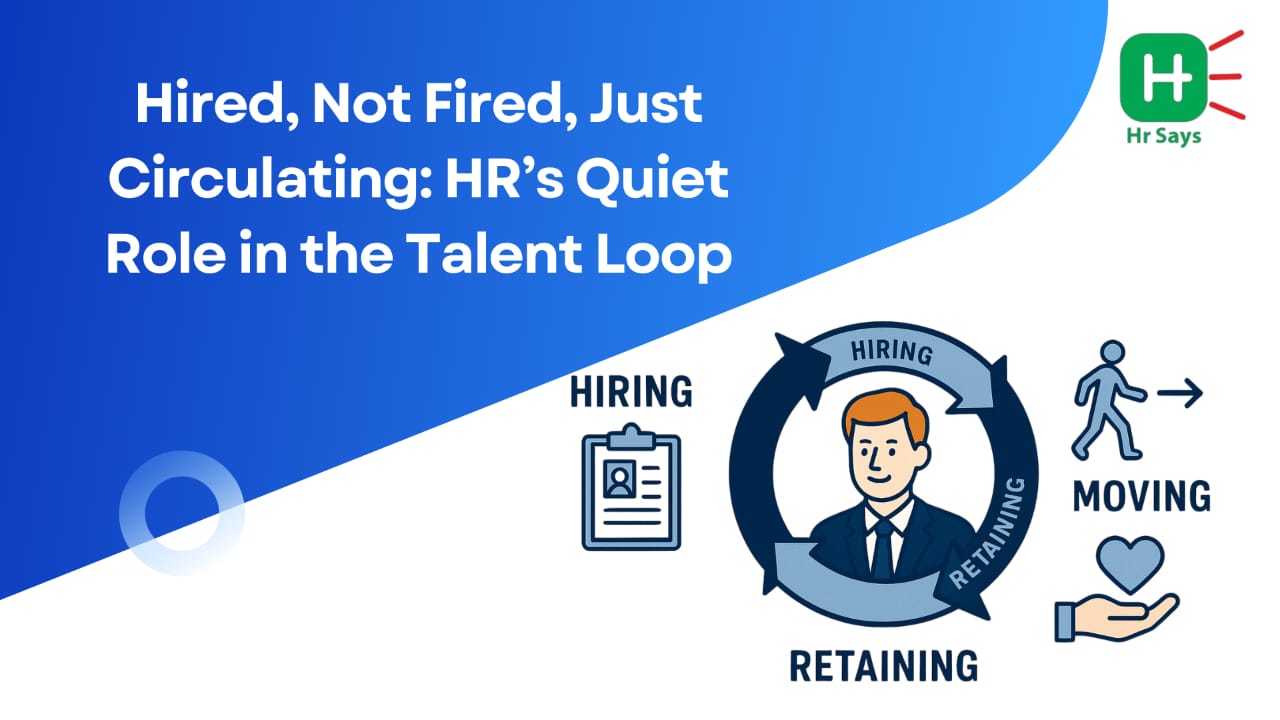Where does talent go when it’s not needed anymore? Do people exit? Or do they evolve?
That’s the question more HR leaders are quietly asking. Because the old model—hire, use, replace—is breaking. A circular talent economy offers something different. Not just hiring. Not just retaining. Reusing. Rebuilding. Reimagining.
What Is a Circular Talent Economy, Anyway?
Think of it like recycling—but with skills.
● People move across roles, not just up or out.
● Departing employees stay connected—as alumni, freelancers, or boomerangs.
● Talent is shared across teams, departments, even partner companies.
● Internal mobility is planned, not reactive.
It’s not just cost-saving. It’s survival—especially in volatile industries. Because talent isn’t always scarce. It’s often trapped in the wrong role.
The HR Shift: From Gatekeeper to Architect
HR can’t own talent like it used to. It must design systems where talent circulates freely—but strategically.
That means:
● Mapping not just jobs, but skills and adjacencies
● Investing in upskilling, not just hiring
● Creating “exit-friendly” cultures where leaving isn’t betrayal
● Keeping alumni networks active, not nostalgic
And most of all—letting go of control. Talent doesn’t need to be boxed anymore. It needs to be in motion.
What’s in It for the Business?
Plenty. If done right.
● Less downtime between roles
● Faster reskilling in response to change
● Lower hiring costs
● Better engagement and loyalty, even among exiters
Most companies already have these assets. What they lack is structure.
Circular economies aren’t built by default. They’re built by design. And HR holds the blueprint.
The Challenges Are Real
This isn’t all smooth. Many managers still fear losing talent to other teams. Leaders may not
want “returners” from failed roles. Alumni programs often gather dust. Metrics are hard to
define.
And not all employees are eager to return.
That’s okay. Circularity isn’t about forcing return. It’s about creating the option.
Conclusion
Linear career paths are fading. What’s rising is movement—fluid, flexible, imperfect. In this new
loop, HR isn’t guarding doors. It’s building bridges.
Circular talent economies won’t work by accident. But if they’re built with trust, tools, and time,
they could be HR’s quiet revolution.
Not loud. Not shiny. But absolutely necessary.

 What if careers weren’t straight lines—or exits weren’t dead ends? In circular talent economies,
roles shift, skills rotate, and people return. HR isn’t managing jobs anymore. It’s managing
movement. That changes everything.
What if careers weren’t straight lines—or exits weren’t dead ends? In circular talent economies,
roles shift, skills rotate, and people return. HR isn’t managing jobs anymore. It’s managing
movement. That changes everything.












.jpeg)












.jpeg)